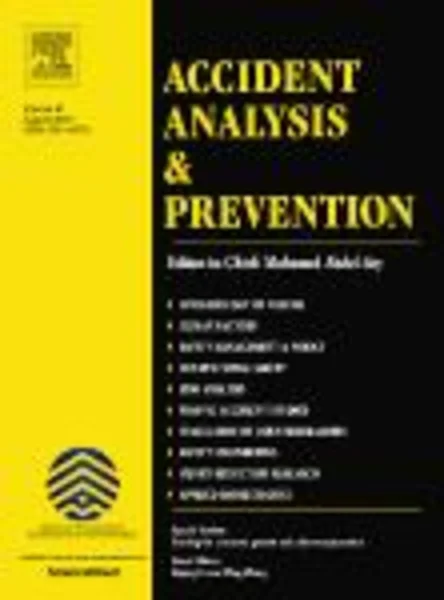-
hybrid iii anthropomorphic test device (atd) response to head impacts and potential implications for athletic headgear testing
جزئیات بیشتر مقاله- تاریخ ارائه: 1392/01/01
- تاریخ انتشار در تی پی بین: 1392/01/01
- تعداد بازدید: 681
- تعداد پرسش و پاسخ ها: 0
- شماره تماس دبیرخانه رویداد: -
the hybrid iii 50th percentile male anthropomorphic test device (atd) is the most widely used human impact testing surrogate and has historically been used in automotive or military testing. more recently, this atd is finding use in applications evaluating athletic helmet protectivity, quantifying head impact dosage and estimating injury risk. but atd head–neck response has not been quantified in omnidirectional athletic-type head impacts absent axial preload. it is probable that headgear injury reduction that can be quantified in a laboratory, including in american football, boxing, hockey, lacrosse and soccer, is related to a number of interrelated kinetic and kinematic factors, such as head center of gravity linear acceleration, head angular acceleration, head angular velocity, occipito-cervical mechanics and neck stiffness. therefore, we characterized atd head–neck dynamic response to direct head impacts in a series of front, oblique front and lateral head impacts. key findings were: (1) impacts producing highest atd resultant center of gravity linear acceleration resulted in the lowest resultant occipito-cervical spine bending moment/force. (2) resultant atd head angular velocity and angular acceleration did not appear coupled to impact direction at lower impact energy levels; these parameters were coupled at higher energy levels. (3) the atd had progressively increasing occipito-cervical stiffness in extension, torsion and lateral bending, respectively. because the atd neck influenced head and neck impact dosage parameters, testing agencies, manufacturers and researchers should consider using the hybrid iii head form attached to a neck as a means to quantify head and neck injury risks as opposed to systems that do not utilize a neck. this heightened understanding of hybrid iii atd head–neck response, and consideration of order of stiffest axes in the lateral, oblique and extension directions, respectively, should aid in the development of head and neck injury impact testing standards.
مقالات جدیدترین رویدادها
-
استفاده از تحلیل اهمیت-عملکرد در ارائه الگوی مدیریت خلاقیت سازمانی و ارائه راهکار جهت بهبود
-
بررسی تاثیر ارزش وجوه نقد مازاد بر ساختار سرمایه شرکت های پذیرفته شده در بورس اوراق بهادار تهران
-
بررسی تأثیر سطح افشای ریسک بر قرارداد بدهی شرکت های پذیرفته شده در بورس اوراق بهادار تهران
-
بررسی تأثیر رتبه بندی اعتباری مبتنی بر مدل امتیاز بازار نوظهور بر نقد شوندگی سهام با تأکید بر خصوصی سازی شرکت ها
-
تأثیر آمیخته بازاریابی پوشاک ایرانی بر تصویر ذهنی مشتری پوشاک ایرانی (هاکوپیان)
-
بررسی وضعیت مبلمان شهری پیاده روها با تاکید بر روان شناسی محیطی"مطالعه موردی، شهر ساری"
-
تاثیر پرده سپر مایل بر خصوصیات جریان و فشار بالابر در پی سدهای نفوذناپذیر
-
بررسی فعالیت انتی اکسیدانی عصاره آبی و متانولی هسته سیب
-
مفهوم زیبایی و مولفه های بصری تاثیرگذار آن در طراحی شهری
-
a new approach for eigenvalue assignment in descriptor systems with output feedback matrix
مقالات جدیدترین ژورنال ها
-
مدیریت و بررسی افسردگی دانش آموزان دختر مقطع متوسطه دوم در دروان کرونا در شهرستان دزفول
-
مدیریت و بررسی خرد سیاسی در اندیشه ی فردوسی در ادب ایران
-
واکاوی و مدیریت توصیفی قلمدان(جاکلیدی)ضریح در موزه آستان قدس رضوی
-
بررسی تاثیر خلاقیت، دانش و انگیزه کارکنان بر پیشنهادات نوآورانه کارکنان ( مورد مطالعه: هتل های 3 و 4 ستاره استان کرمان)
-
بررسی تاثیر کیفیت سیستم های اطلاعاتی بر تصمیم گیری موفق در شرکتهای تولیدی استان اصفهان (مورد مطالعه: مدیران شرکتهای تولیدی استان اصفهان)
-
استقرار سازمان یاد دهنده مولفه ای اثر گذار بر چابکی سازمان و بهبود عملکرد سازمان
-
تاثیر سرمایه فکری بر رابطه بین حاکمیت شرکتی و عملکرد شرکت های پذیرفته شده در بورس اوراق بهادار تهران
-
تحلیل استاتیکی غیرخطی (پوش آور) ساختمانهای با قاب خمشی فولادی دارای طبقه نرم
-
بررسی رابطه بین حمایت سازمانی ادراک شده و رفتار شهروندی سازمانی کارکنان شعب بانک سپه استان فارس
-
بررسی و نقد دیدگاه برتری مردان بر زنان با تکیه بر آیه ی«الرِّجالُ قَوّامُون علی النِّساء»




سوال خود را در مورد این مقاله مطرح نمایید :